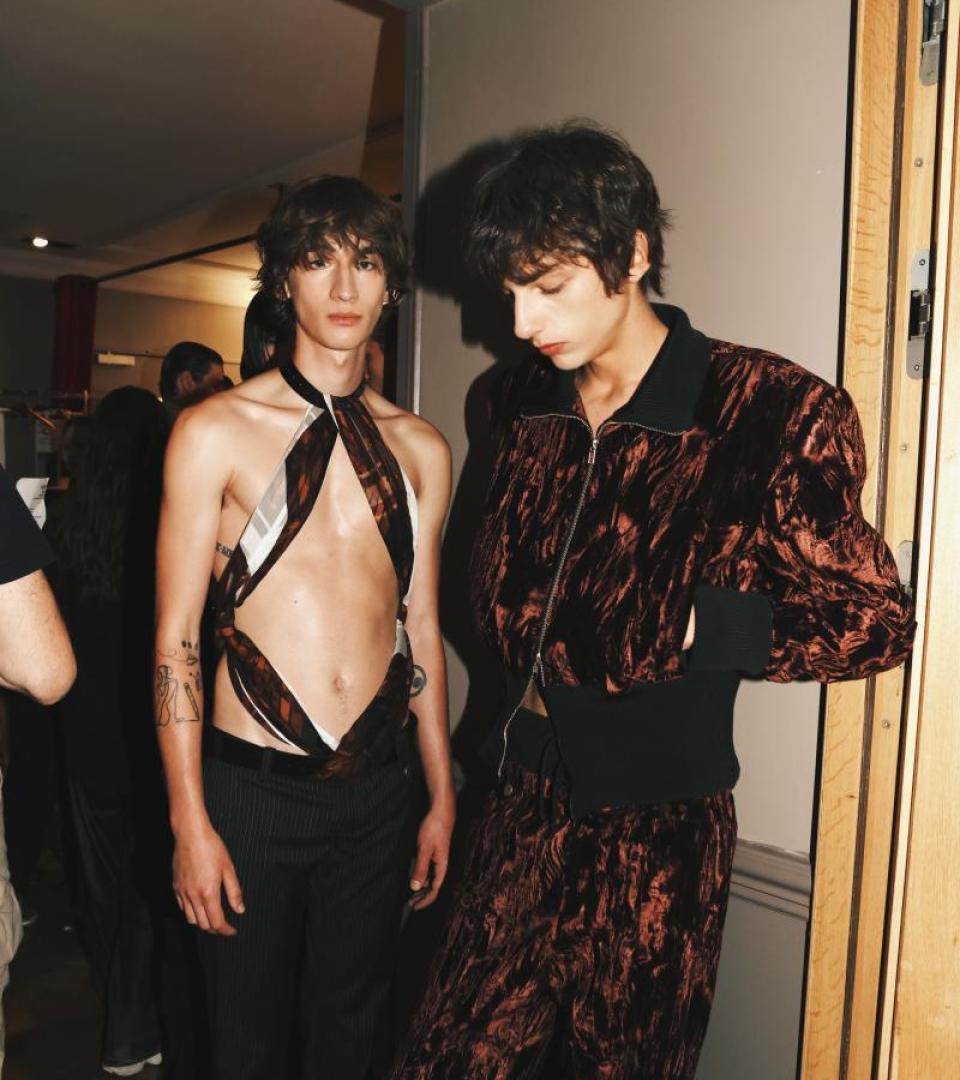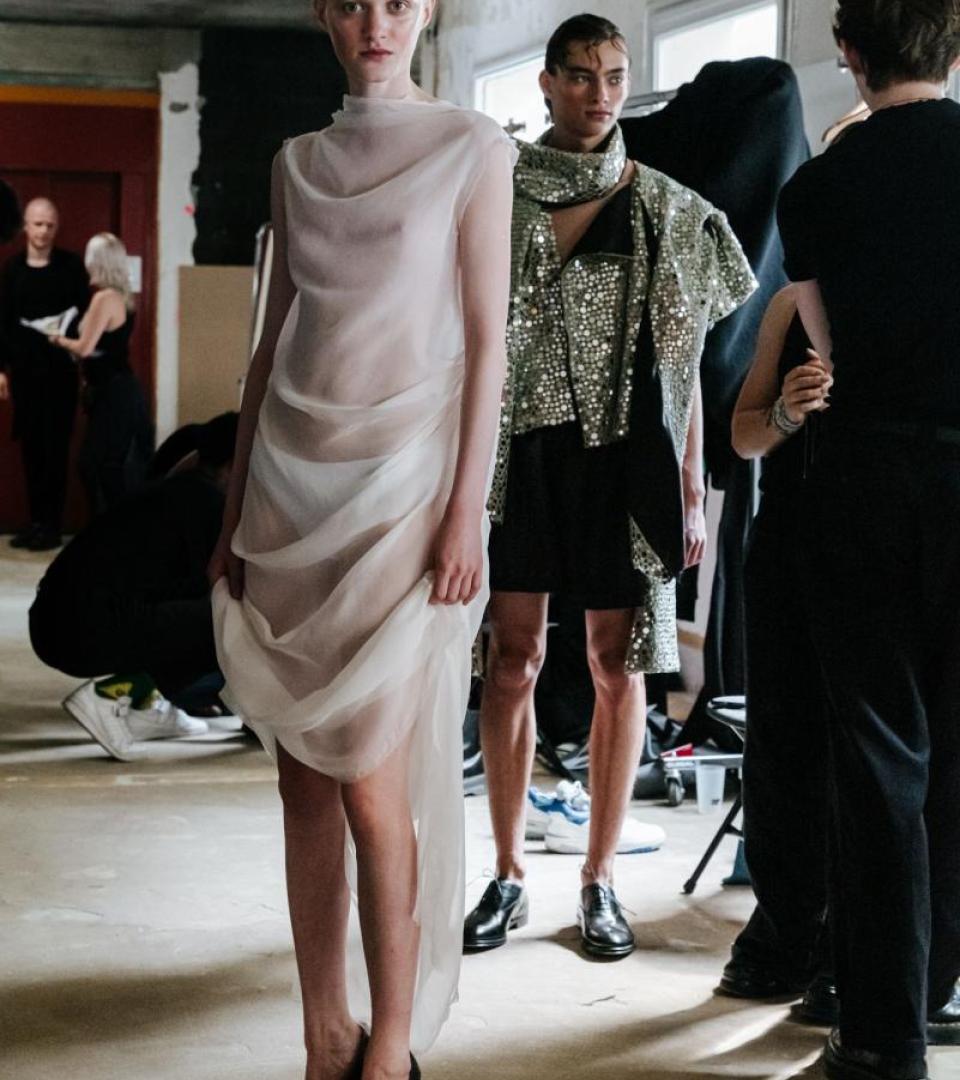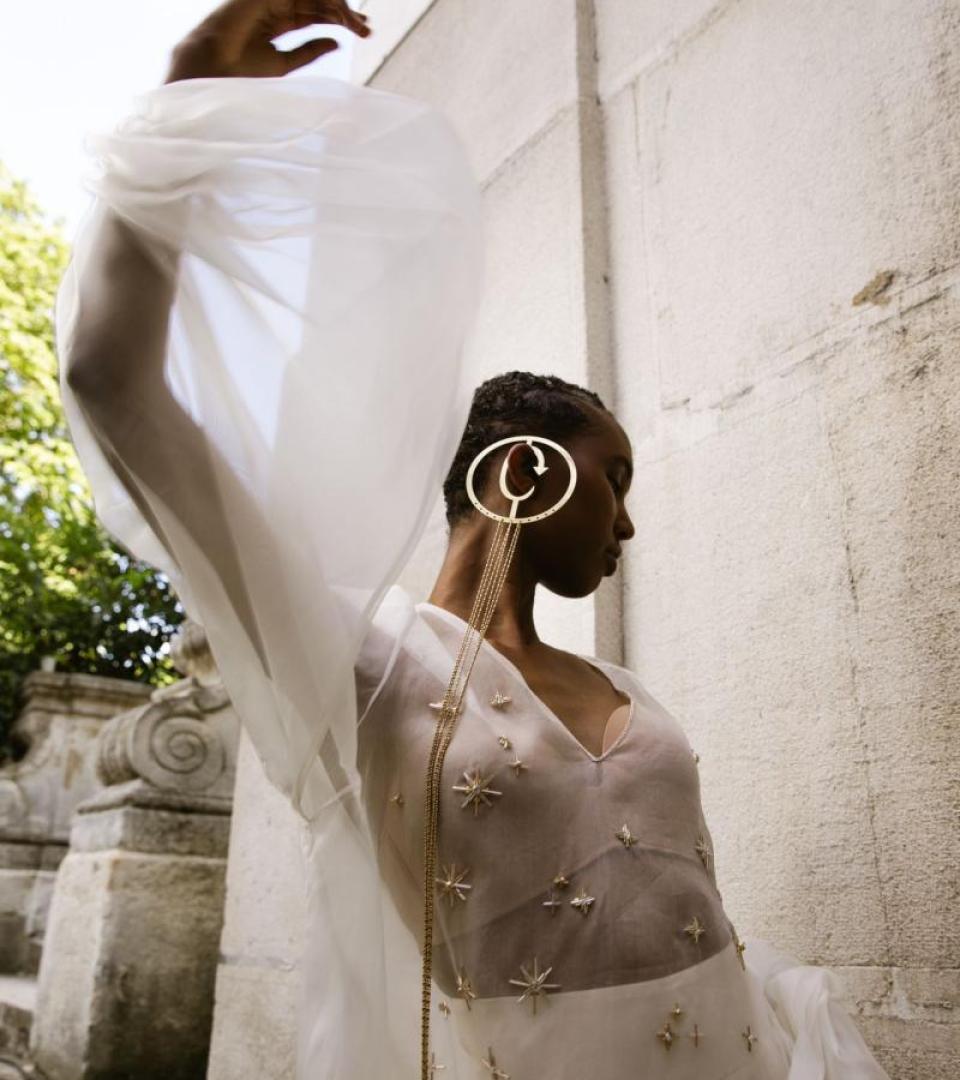Cultural Crossover at 3.PARADIS
By Paul McLauchlan
Emeric Tchatchoua’s Spring-Summer 2025 collection for his label 3.PARADIS was the product of a six-week sojourn that took him from his ancestors’ village in Cameroon to the Canadian countryside, where he spent his adolescence, and the French capital, where he was born and now lives and works. The three locations each come with a loaded history wrapped up in provenance and identity and, without favouring one over the other, the designer wanted to uncover how his own identity is entangled with all three. The resulting collection, spanning references from Canadian workwear to French fashion and artisanal Cameroonian crafts, forms its own unique cultural melting pot. Mindful of cultural clashes, he emphasised the work as a cultural crossover in a postcolonial world.
He explored the contrast between artisanal textures present in Cameroonian handcrafts, handwoven fabrics, and technologically-driven fabrications and 3-D printing. There is a blend of patterns found in Cameroonian textiles with references to European and American volumes and fabrics. Among the nods to traditional dress, baggy Americanised volumes and boxy workwear, Tchatchoua also listed hip-hop and jazz in his arsenal of cultural touchstones. Alongside his play on tradition and modernity, the designer looked ahead with a futuristic 3-D fabrication that changes colour in different lighting. With sophistication and ease, the designer carefully ties together an eclectic spread of references.
“There are many references in my clothes which mix different worlds and cultures. It’s about creating a new identity and reflecting who I am”, said Tchatchoua, on a video call.
What was the starting point for this collection?
I realised that I’m a mix of different cultures. I was born in Paris, where I was raised until I was 13. Then I moved to Canada, where I spent almost 18 years of my life. I’m very close to my parents’ country, which is also my country, Cameroon. I was drawn to this idea of building a new identity based on an amalgamation of different identities. I wanted to look at how you build a new identity and culture from that mix. With globalisation and the internet, this mixture is so much more common.
I started working on this collection back in December or January. I traveled to Cameroon for two weeks, I traveled to Canada for two weeks, and I traveled back to France to research for two weeks. In Cameroon, I wanted to observe the people and the culture, how they interacted and what they wore. I went to old artisanal shops that sold local crafts, and I visited my ancestors’ village. In Canada, I spent time with my friends trying to understand the way that we grew up and what the culture was like back then. In Paris, I visit galleries all the time, I see my family and friends. It made me realise that the idea of multiculturalism is not as advanced here as it is in Canada. There, someone could say they’re Italian. There’s no question that they’re also Canadian. It’s not the same in France. It pushed me to make a collection where people have to understand that you cannot only be one thing anymore, you can be many.
How does it feel to be showing on the official calendar for the first time?
I’m very grateful [to be showing on the official calendar]. It makes a lot of sense because I’ve been working hard on this for the last 10 years. What we’re doing is different from other things that I see [in the industry] so it’s great to be given a voice and a bigger platform to the brand. It’s amazing, I’m really happy.
What impact would you like your brand to have?
It might sound cliché, but I’m here to inspire people. My story is the story of a young boy who was triggered by the culture, by books, and by people who changed my life – and things changed for me. I want to have the same effect on people so that I can save them from themselves. I want people to be inspired by this, not just because I’m doing fashion but because the message, the collection, and what I represent, make them feel they can find their true selves too because I’m doing it. 3.PARADIS is about universalism, peace, and freedom. I hope it can help make tomorrow a better place.
This interview has been lightly edited



